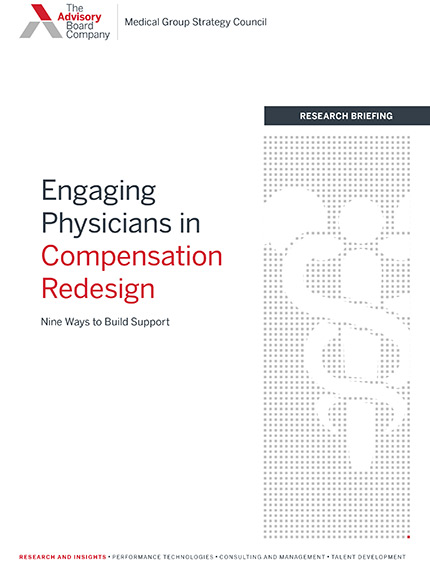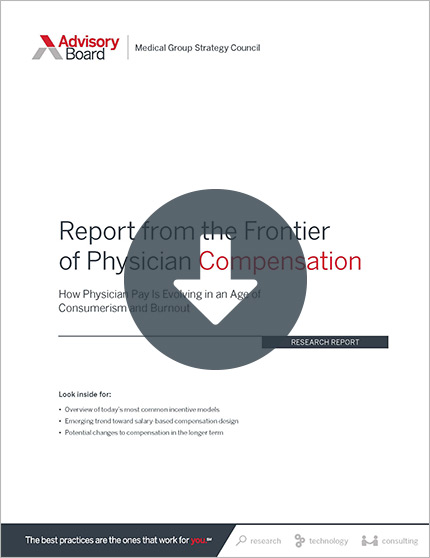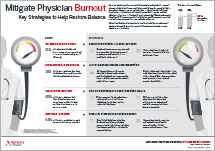Auto logout in seconds.
Continue LogoutThe exact reason why male physicians continue to be paid more than female physicians is unclear, but Medscape this year examined a number of factors and assessed some possible explanations for the wage gap, Leslie Kane, senior director of Medscape's Business of Medicine website, writes for Medscape.
Advisory Board's take on the gender pay gap
Gender pay gap among physicians continues to grow
Medscape has identified disparities in how male and female physicians are compensated since it started publishing its annual physician compensation report in 2011, Kane writes.
Medscape's latest Physician Compensation report found the gender compensation gap grew in 2019 when compared with 2018. Male physicians in 2019 on average were paid 25% more than female physicians, up from an 18% pay gap in 2018, the report found.
According to the report, male primary care physicians in 2019 were paid an average of $258,000, while female primary care physicians were paid an average of $207,000. Similarly, male specialists were paid an average of $372,000, while female specialists were paid an average of $280,000.
8 reasons why female physicians might be paid less than male physicians
Each year, Medscape examines the compensation data to identify factors that possibly could explain the differences in compensation. However, Kane writes that Medscape went further this year by examining additional factors, analyzing their data with different filters, and exploring theories offered by their readers to compile a list of eight factors that might explain the compensation differences—and assess how they hold up.
1. More female physicians work part-time than male physicians
After Medscape's 2012 Physician Compensation report showed a wide disparity in compensation between male and female physicians, Medscape readers suggested men are paid more than women because more women work part time than men, Kane writes. While Medscape has found that more women work part time than men, Kane writes that the wage compensation gap persisted even after Medscape filtered out part-time physicians from its final compensation reports.
2. More women work in lower-paying specialties
Though Medscape has found that more women pursue lower-paying specialties when compared with men, wage disparities were present even within specialties. For example, Medscape found male anesthesiologists were paid an average of $407,000, while female anesthesiologists were paid an average of $344,000.
3. Female physicians are paid less because they are younger
According to Kane, an athenahealth survey found that more than 60% of physicians who are younger than 35 are female. Some observers have said that could explain the gender wage gap because younger physicians generally are paid less than older physicians, and male physicians are comparatively older, Kane writes. However, she notes Medscape has found that the gender wage gap exists within the same age groups.
4. Fewer female physicians are self-employed
Medscape has found that self-employed physicians typically have higher incomes than employed physicians, and that male physicians are more likely to be self-employed than female physicians. For example, Medscape has found a self-employed specialist is paid an average of $348,000, compared with $274,000 for an employed specialist. Further, a recent Medscape report found 23% of female physicians are self-employed, compared with 35% of male physicians. While those findings could suggest an explanation for the gender wage gap, Medscape found the wage gap between male and female physicians persisted even when only looking at employed physicians, Kane writes.
5. Female physicians spend fewer hours with patients
Medscape and other institutions have found that female physicians on average spend four hours less with patients than male physicians, Kane writes. She notes, "This factor might make a small difference for self-employed physicians (the more time spent seeing patients, the more revenue the physician may bring in)." But, Kane writes, "On the flipside, more time spent on paperwork could potentially lead to fewer denied claims. So this metric does not seem to add any information to account for the gender pay gap."
6. Female physicians are not aggressive negotiators
According to Kane, existing research suggests men are more likely to negotiate higher salaries than women. For example, she cites a Harvard Business Review article by Linda Babcock, a professor of economics at Carnegie Mellon University, explaining three separate studies that showed women are less likely to negotiate for what they want than men. As such, many physicians believe that difference could be one factor contributing to the wage gap. However, Kane writes, "While aggressive negotiation may be a contributing factor, many physicians doubt that it's the chief factor."
7. More female physicians are seeking work-life balance
According to Kane, some readers also have suggested that female physicians are paid less because more of them are seeking work-life balance. According to Travis Singleton, EVP of Merritt Hawkins, that idea might be partly true. "We have found that the vast majority of the difference in hours spent seeing patients is driven by physicians themselves," Singleton said. He added, "Of the many physicians we work with, and hear what is important to them in a job, more women physicians say it's quality of life and flexibility with their schedule," while "[m]ales more often say 'income and control over certain aspects of their practice.'" Singleton said female physicians who are more concerned with having a flexible schedule typically understand that they will be paid less.
8. Female physicians are unfairly compensated, just like all other women
Kane writes that gender pay gaps have "been chronicled in numerous studies over many years—not only among physician groups but in other industries and job categories as well." As such, Medscape readers in "many comments … were irate that some doctors keep looking for other factors to explain the pay gap rather than just calling it discrimination," Kane writes. She continues, "Still, it's likely that the factors we investigated have contributed to some degree." Kane notes that "[s]everal organizations, such as TIME'S UP Healthcare, are working to close the gender pay gap in medicine and health care" (Kane, Medscape, 6/11).
Win the war for physician talent
Physician recruitment is not a new problem. But generational changes and rising expectations for physician performance make competition for physician talent feel increasingly intense today.
Though recruitment challenges are deep-rooted, organizations can take steps to ensure their physician recruiting process is as effective as possible. Read the report to learn the four requirements for successful recruitment in today’s competitive market.
Don't miss out on the latest Advisory Board insights
Create your free account to access 1 resource, including the latest research and webinars.
Want access without creating an account?
You have 1 free members-only resource remaining this month.
1 free members-only resources remaining
1 free members-only resources remaining
You've reached your limit of free insights
Become a member to access all of Advisory Board's resources, events, and experts
Never miss out on the latest innovative health care content tailored to you.
Benefits include:
You've reached your limit of free insights
Become a member to access all of Advisory Board's resources, events, and experts
Never miss out on the latest innovative health care content tailored to you.
Benefits include:
This content is available through your Curated Research partnership with Advisory Board. Click on ‘view this resource’ to read the full piece
Email ask@advisory.com to learn more
Click on ‘Become a Member’ to learn about the benefits of a Full-Access partnership with Advisory Board
Never miss out on the latest innovative health care content tailored to you.
Benefits Include:
This is for members only. Learn more.
Click on ‘Become a Member’ to learn about the benefits of a Full-Access partnership with Advisory Board
Never miss out on the latest innovative health care content tailored to you.




